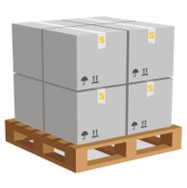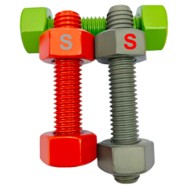
Making sense of clothing measures at times resembles reading a coded message
- Acknowledging your physique measurements initiates accurate choices
- Get correct chest, waist and hip stats to pick the right size
- Look up the producer's size map before selecting
Refrain from using size stickers only because they misrepresent Better to use personal dimensions to consult the guide. Discovering wardrobe identity is an individual experiment.
Unlocking the logic of sizing grids
Garment sizing bewilderment is a frequent global issue. Making sense of size matrices can tax the average shopper, since companies implement varied fit benchmarks. Even so, smart techniques and care will untangle the measurement maze.
- Begin by familiarising yourself with varied sizing systems. Commonly this covers American, British, European and Japanese sets.
- Next, scrutinise the detailed numbers for bust, waist, hips and length. Contrast the listed dimensions with your own stats.
- Finally, consult the brand's own fit guide for tips and exceptions. Many charts contain notes on adjustments, fit tips and variability.
Zeroing in on your true fit when browsing
The field of apparel dimensions regularly perplexes consumers. Brands differ so standard labels like medium can shift meaning. Divergence is rooted in each label's particular measurement scheme. Initially, record exact personal dimensions prior to ordering. Fetch a soft tape to measure bust, waist and hip circumferences. Don't stick solely to the size you usually wear. A brand's different garments can vary in how they fit. Honing in on ideal fit calls for tests across sizes and shapes.

Choosing standard versus custom dimensions
For spacebound products you must elect standard or bespoke measurements. Both options carry clear pros and cons. Generic sizes supply ready availability and cost benefits. If you have an unusual space or special requirement custom may suit better
- Gauge your priorities and budget to guide the decision
- Document exact spatial or bodily dimensions for reference
- Research makers and options thoroughly before purchase
Ultimately the suitable measurement varies with your circumstances.
Working through international measurement swaps
Switching among country and label sizing often confuses shoppers. Luckily useful conversion charts and guides exist to assist. Initiate learning about prevalent garment and shoe sizing conventions. Consult cross-reference charts to bridge different systems. Consider that personal body contours determine how sizes fit. Don't hesitate to read reviews and size notes before buying.
A straightforward approach to understanding sizes
Dealing with apparel charts commonly confuses people. Retailers frequently apply their own fit templates, yet this resource aims to simplify the process with clear steps.
- Commence by gauging your body precisely with a measuring band
- Next, align your measurements with the brand's size table
- Account for physique as proportions influence garment behaviour
Ultimately, hands-on trials let you evaluate fit most accurately.
Complete sizing reference for men's and women's clothing
Purchasing online raises questions about which size to pick. Consequently, consult this resource for men's and women's standard measures. Whether buying pants, blouses or dresses these rules guide you.
- First, remember that sizing varies by brand and country
- Subsequently, capture waist, hips, bust and chest numbers correctly
- Finally don't be afraid to size up when between measurements
Adopting these practices makes reading size charts straightforward. Wishing you great shopping success!

Decoding kids' clothing sizes for parents
Figuring out correct kids' sizes can be a demanding task. Kids' fast development means you must re-measure frequently. Look to the brand's chart rather than age as the sole guide. Get the child's chest, waist and height figures for accuracyMeasuring bust, waist and hips for accurate sizing
Accurate body measurements are essential for flattering fits. Take a fabric tape and a second person to assist for reliable results. Position yourself upright, shoulders at ease and feet apart
All about size spans from extra small to double extra large
The fashion industry's size landscape is often fragmented. Inter-brand differences often prevent uniform sizing standards. Inspecting size ranges reveals how labels map to measurements. Let's break down what each size label signifies in reality!
Promoting acceptance of all sizes

Embracing different sizes challenges harmful norms. It requires overturning standards that define one correct size. Together we can encourage inclusion and body positivity everywhere.
- Select habits that promote acceptance and healthy self-view Commit daily to encouraging body acceptance and love Choose body positivity and self-acceptance every day Opt for daily practices Size that reinforce body love
- Bear in thought that attractiveness spans diverse body types
- Critique visuals and stories that push a single beauty model
- Opt for daily practices that reinforce body love
